
How to Grow Your Email List: 9 Effective Strategies
Despite the rise of social media, email marketing is still an effective way to nurture existing customers, interact with them, and upsell or cross-sell to them. What about getting new customers, though? Email is a strong lead generation channel, too. But not knowing how to grow your email list can keep your business (and revenue) stagnant.
In this blog post, we’ll share effective strategies to grow your list with engaged subscribers, plus a few things to avoid.
Powerful popups and high-converting landing pages at your service
Grow your audience from $9/month.
Start free1. Create valuable content
It may seem counterintuitive, but the first step to growing your email list is ensuring you retain your existing subscribers. If people are consistently unsubscribing, your efforts to attract new sign-ups may not translate into long-term growth.
Delivering high-quality, valuable content keeps your audience engaged and encourages them to stay subscribed. This includes a mix of educational and promotional content, such as tutorials, how-to guides, or real-world use cases that subtly showcase your product.
Moreover, when your content provides real value, your subscribers are more likely to share your emails with their network—leading to organic list growth through word of mouth and referrals. Encouraging subscribers to forward your newsletter or share your content can help bring in new, like-minded audience members who are already interested in what you have to offer.
2. Gamify the signup experience
Gamification taps into our natural desire for rewards and competition. By gamifying the signup process, you can transform a routine task into an engaging and interactive process that stays memorable.
Interactive elements you can use include:
- “Spin-to-win” wheels
- Digital scratch-off cards
- Personality quizzes
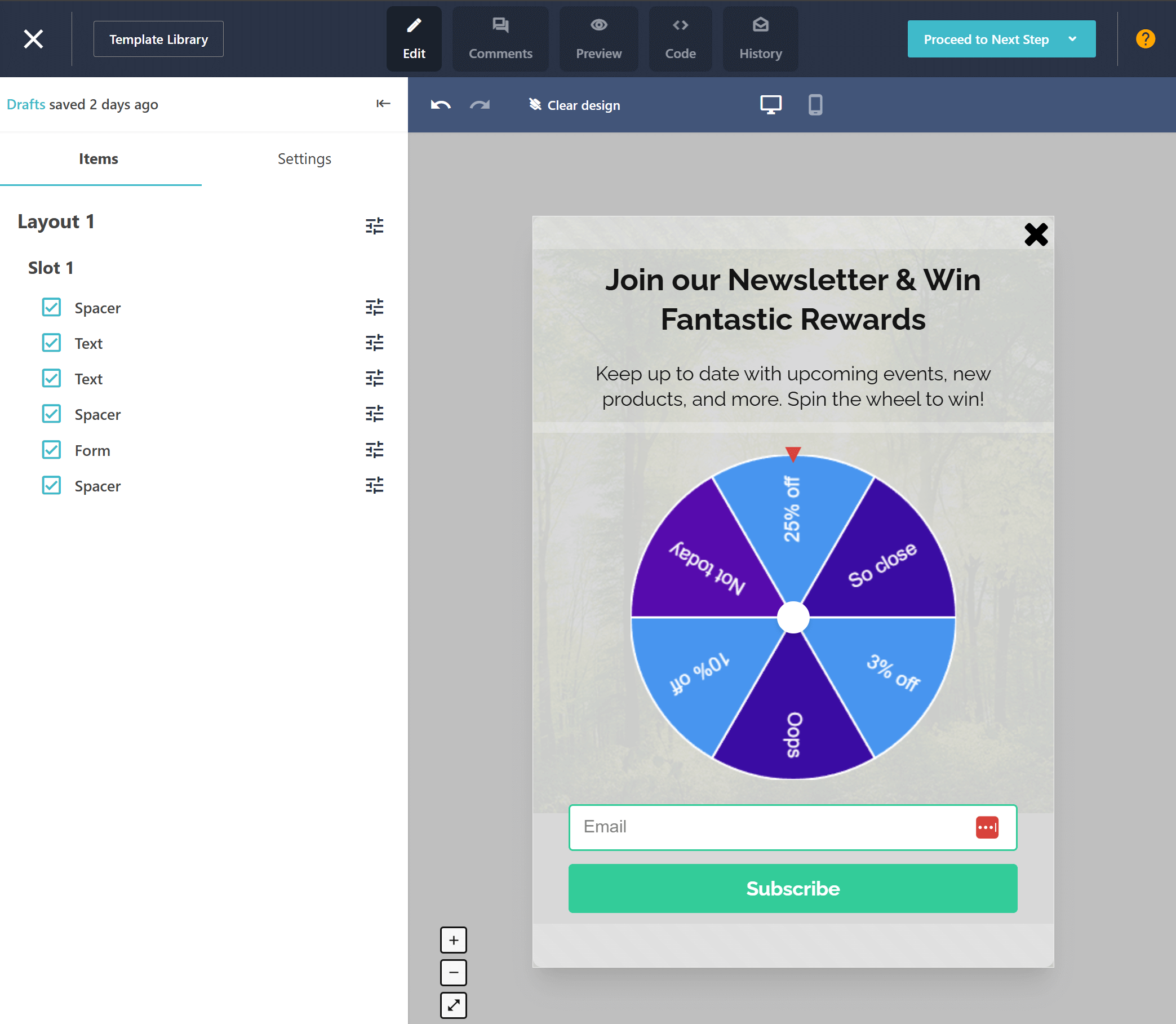
You can use these tools to offer instant satisfaction, such as the chance to win discounts or access to exclusive content. These rewards incentivize users to provide their email addresses.
For marketers, gamification provides valuable data collection opportunities. Quizzes and games can capture insights about user preferences and behaviors, leading to more targeted and effective email campaigns.
This strategy also filters out uninterested users in a natural way, leaving you with a more engaged audience.
Additionally, gamified experiences encourage social sharing and referrals. Elements like referral leaderboards or bonus entries for inviting friends amplify your reach and bring in new subscribers organically. These experiences are inherently shareable, boosting visibility across platforms.
To maximize the effectiveness of gamified forms, align the experience with your audience’s interests, keep interactions simple, and ensure mobile optimization.
3. Combine forms with your social media platforms
Social media can be a helpful tool when building your email list. The first thing you can do is include a sign-up button or opt-in form on your Facebook page. This way, people who find you organically on social media will be able to subscribe.
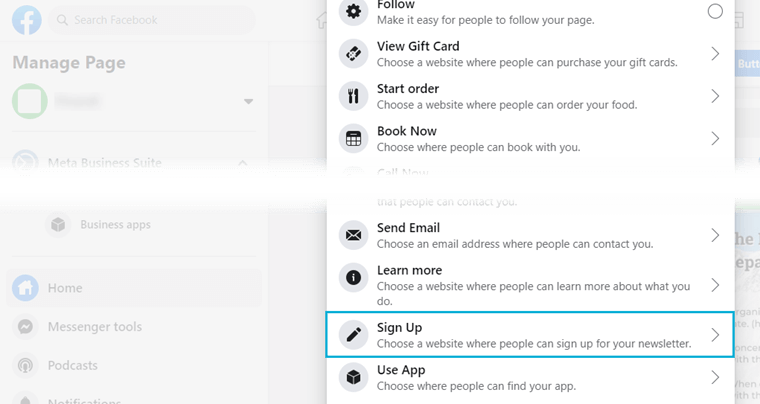
You can also run a social media campaign that encourages followers to join your newsletter. Whether you have a small or a larger business, this tactic is worth doing since social media offers a huge reach.
Your social channels can also increase signups in less direct ways. For example, you can post customer testimonials and reviews to encourage more people to join your community. You can even ask your customers to share these reviews and tag you in their posts for greater visibility.
Did you know that 50% of potential customers are likely to visit a company’s website after encountering a positive review on social media? Positive reviews “prove” to other users that your product is great, and this can influence their purchasing decisions.
4. Create a referral program
You shouldn’t just rely on people sharing your newsletter and their testimonials on their own. A strategically designed referral program will motivate your current subscribers and, eventually, turn them into ambassadors for your email list. By sharing their positive experiences, they provide authentic social proof, contributing to organic growth.
Incentivizing referrals also helps you tap into new audiences with minimal effort. Here is an example from the mattress brand Casper:
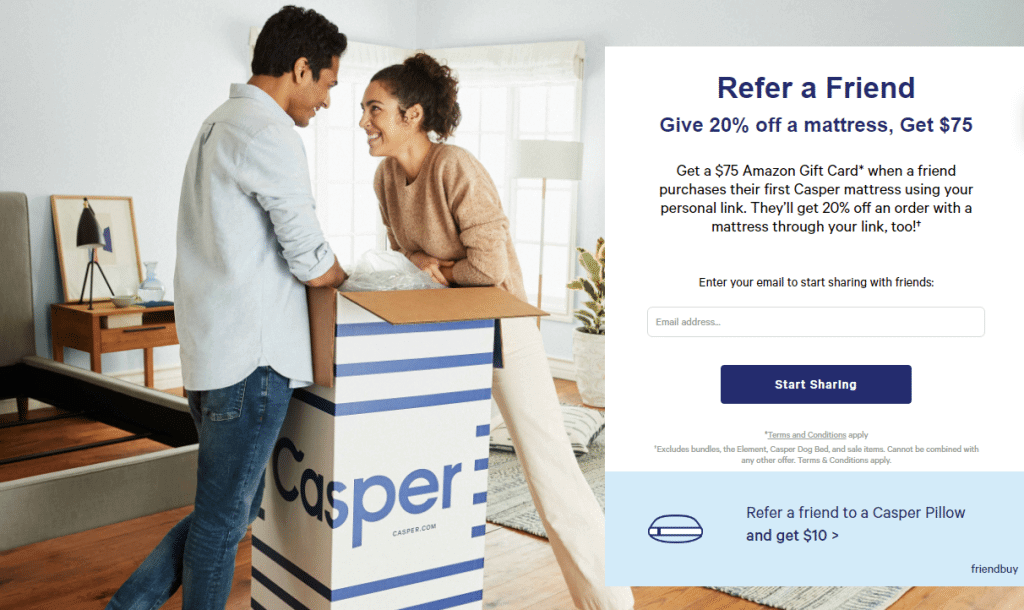
Key elements to include in your referral program:
- Provide attractive rewards for successful referrals (e.g., discounts, loyalty points).
- Simplify the sharing process for ease of participation.
- Accurately track referrals to ensure fair reward distribution.
- Consistently communicate the program’s benefits to your subscriber base.
- Recognize and celebrate top referrers to maintain engagement and participation.
With the help of a referral program, you can effectively grow your email list with highly relevant subscribers. By leveraging the trust your audience has built within their networks, you create a genuine and valuable connection. This ensures new subscribers are truly interested in your brand, enhancing the quality of your email list.
5. Host webinars and live events
Webinars and live events are another great strategy to grow your email list. The subscribers you gainare not only highly engaged but also aligned with your brand’s goals.
Unlike generic lead generation tactics, webinars attract people actively seeking value in your niche, increasing the likelihood of meaningful, long-term engagement.
If you want to create a successful webinar, you should have a clear objective, select a relevant (and interesting) topic, and provide valuable content during your presentation. Make sure to promote your webinar or live event through email campaigns and dedicated landing pages.
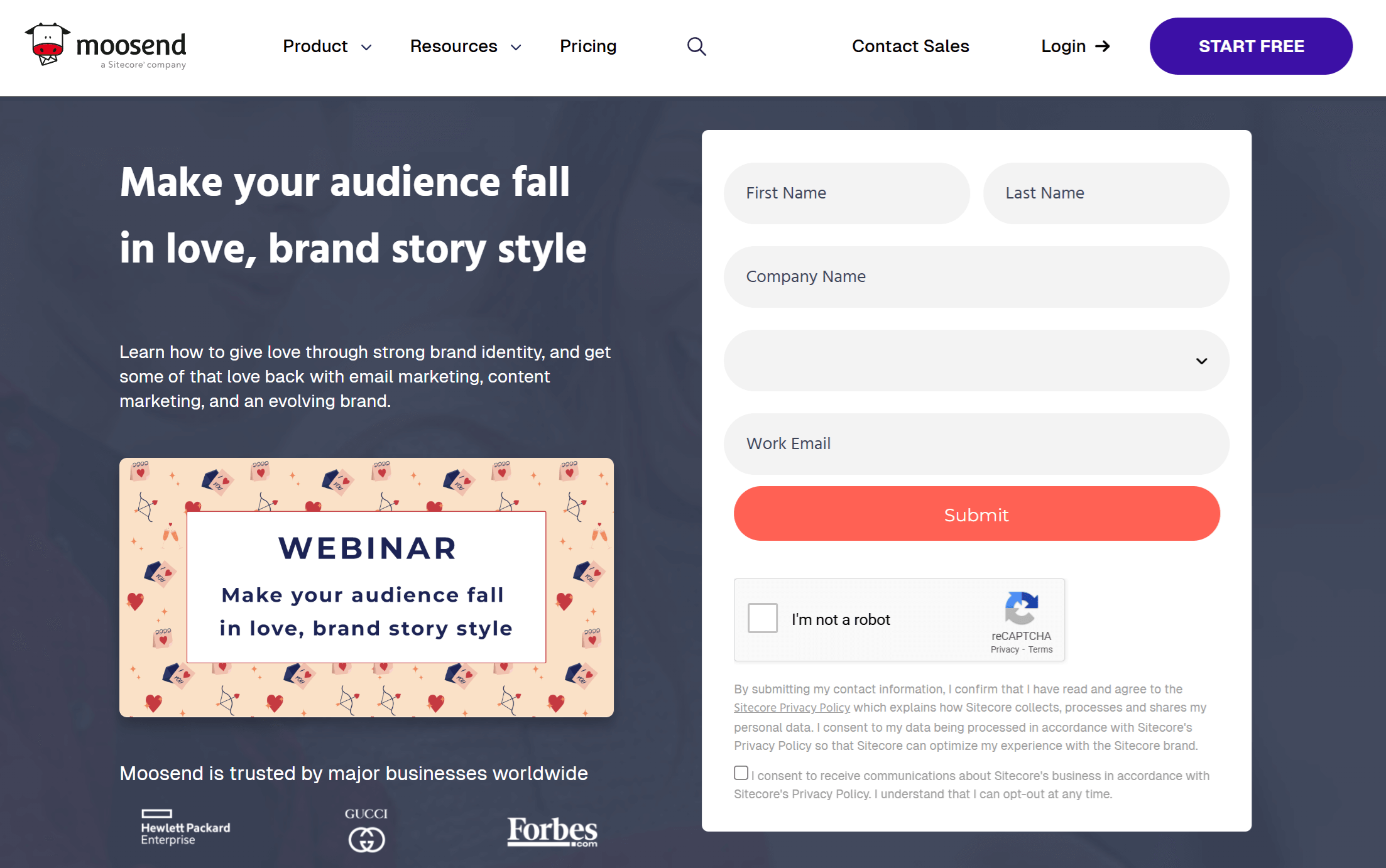
After the webinar ends, don’t forget to follow up with attendees by providing additional content and resources. This can help solidify a relationship with them and increase the likelihood of converting them into paying customers.
6. Start a blog
Blogging can help you increase your ranking on search engines and showcase your authority in your niche. By publishing high-quality blog posts that interest your audience, you can increase brand awareness and collect email addresses from users who want to learn from you.
For example, you can place a sidebar in your blog posts that stays visible while readers scroll through your post. This is a prominent yet non-intrusive way to turn blog traffic into new contacts.
7. Create lead magnets for your blog posts
If your blog posts are driving lots of visitors, then why not benefit from this traffic? A common and effective strategy is to “lock” additional or exclusive content behind a lead magnet (also known as content upgrade.)
Readers can unlock this additional content by providing their email address. This tactic allows you to grow your email list with engaged subscribers who are already interested in your brand or content.
For example, a blog post about email marketing could include a downloadable checklist, template, or guide as a content upgrade.
If you want to improve the quality of your email list, be sure to align the lead magnet with the blog post topic.
Finally, content upgrades create a sense of exclusivity, subtly nudging readers to act in order to get the “premium” piece of content.
8. Use exit-intent popups
Exit-intent forms appear when a website visitor tries to leave the page. On desktop, these popups detect when a user’s cursor moves to close the browser tab or hit the back button. On mobile devices, they respond to behaviors such as scrolling up, pressing the back button, or being idle on the page.
The purpose of these popups is to encourage visitors to subscribe to your mailing list before leaving. How is this achieved? By providing a valuable incentive. The more attractive the incentive is, the more subscribers you’ll gain.
To maximize their impact, consider the following:
- Trigger timing: Display the popup at the exact moment a user signals they’re about to leave.
- Highlight value: Emphasize benefits like exclusive content, discounts, or VIP access for subscribers.
- Craft compelling CTAs: Use clear, action-oriented language to prompt immediate engagement.
- Design with usability in mind: Ensure the popup is visually appealing and easy to close or interact with.
Testing different designs, messages, and incentives is also very important. It can reveal what resonates most with your audience, helping you refine your strategy.
9. Attend an event
Another way to grow your email list is by attending events. For this strategy, you need to create a landing page specifically for the event, so you can engage with attendees afterwards.
At the same time, your team can collect email addresses in person, if possible.
If you’re sponsoring the event, you can create event banners that attract attention and encourage interested people to interact with your brand. These banners can have a scannable QR code on them that facilitates the signup process and makes it easier.
Here’s an example of a roll-up banner the Moosend team used at an event:
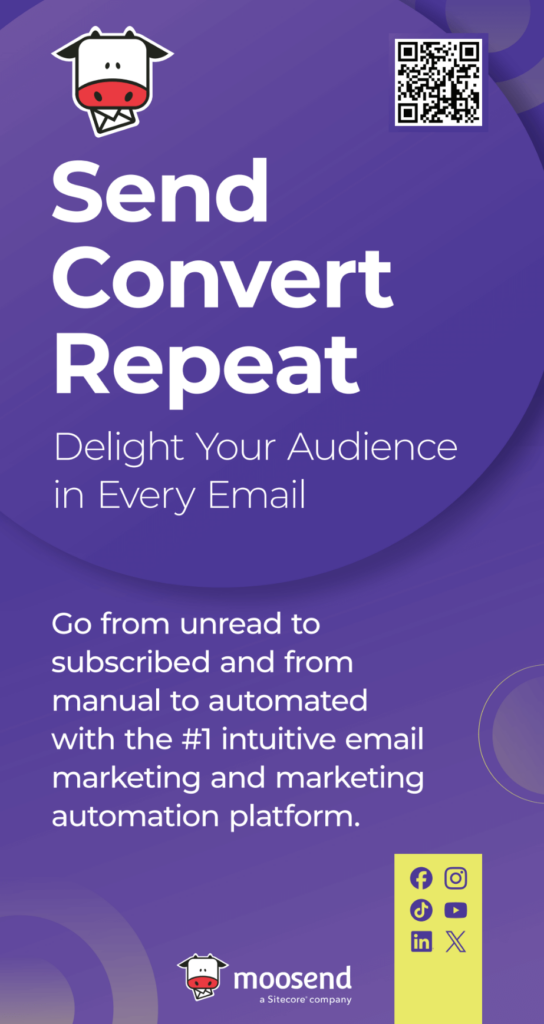
What to avoid when building an email list
Building a quality email list takes time and certainly does not come overnight. So, here are a few things that you should not do when building your list:
1. Don’t purchase email lists
Purchasing an email list may seem like a quick way to grow your audience, but sadly it’s among the most common mistakes since it can negatively affect your business. First of all, there is no guarantee that those addresses are real. Also, those users may not be interested in your content.
And now things get more serious. Sending emails to a purchased list may violate data protection laws like GDPR in Europe and the CAN-SPAM Act in the U.S. This means you could face fines or other legal consequences.
Purchased lists are also bad for your sender reputation. How? If you experience high spam complaints, your email deliverability will be affected. On top of that, you should remember that purchased lists may contain spam traps, leading your emails to be flagged as spam.
2. Don’t require too much information
Subscribing should be an effortless process, so keep your forms simple—in most cases, a name and email address are enough. You also need to make the user feel comfortable about providing their contact information. Asking too much can either deter them from completing the signup or annoy them.
3. Don’t ignore email list cleaning
To maintain high email deliverability and have accurate metrics, you need to remove inactive subscribers. You can automate the whole process by setting up an email list cleaning sequence that keeps your list healthy and engaged.
4. Don’t offer incentives that lack value
The incentives you provide must be valuable to your audience, e.g., a discount or freebie. Otherwise, they are going to be ignored by visitors.
5. Don’t be vague
Clearly communicate with your subscribers about the kind of content they can expect and how frequently you’ll send it. This transparency helps maintain engagement and minimizes the likelihood of unsubscribes.
Aim for Quality, Not Quantity
Building an email list for your business is all about quality and not quantity. Avoid one-off initiatives that bring in new subscribers only temporarily. Instead, focus on proven and effective tactics like the ones above that will consistently drive new signups.
Don’t forget to A/B test your forms, experiment with different lead magnets, and provide value to your audience. Aim for the long game and you’ll soon have an engaged email list with subscribers that genuinely want to hear from you.


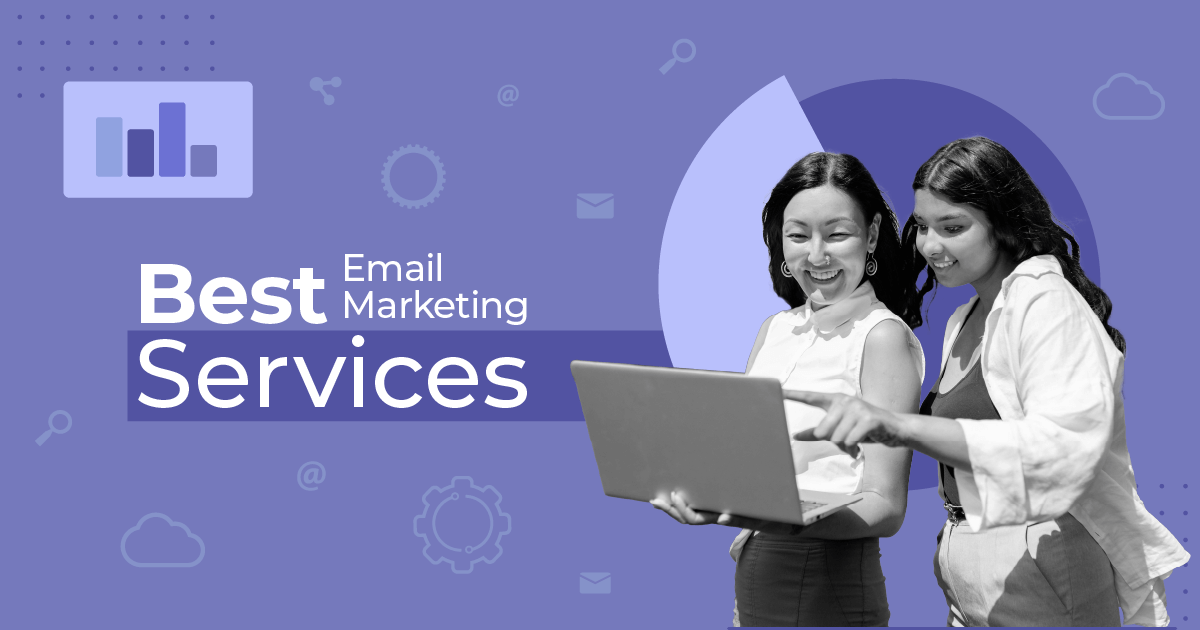
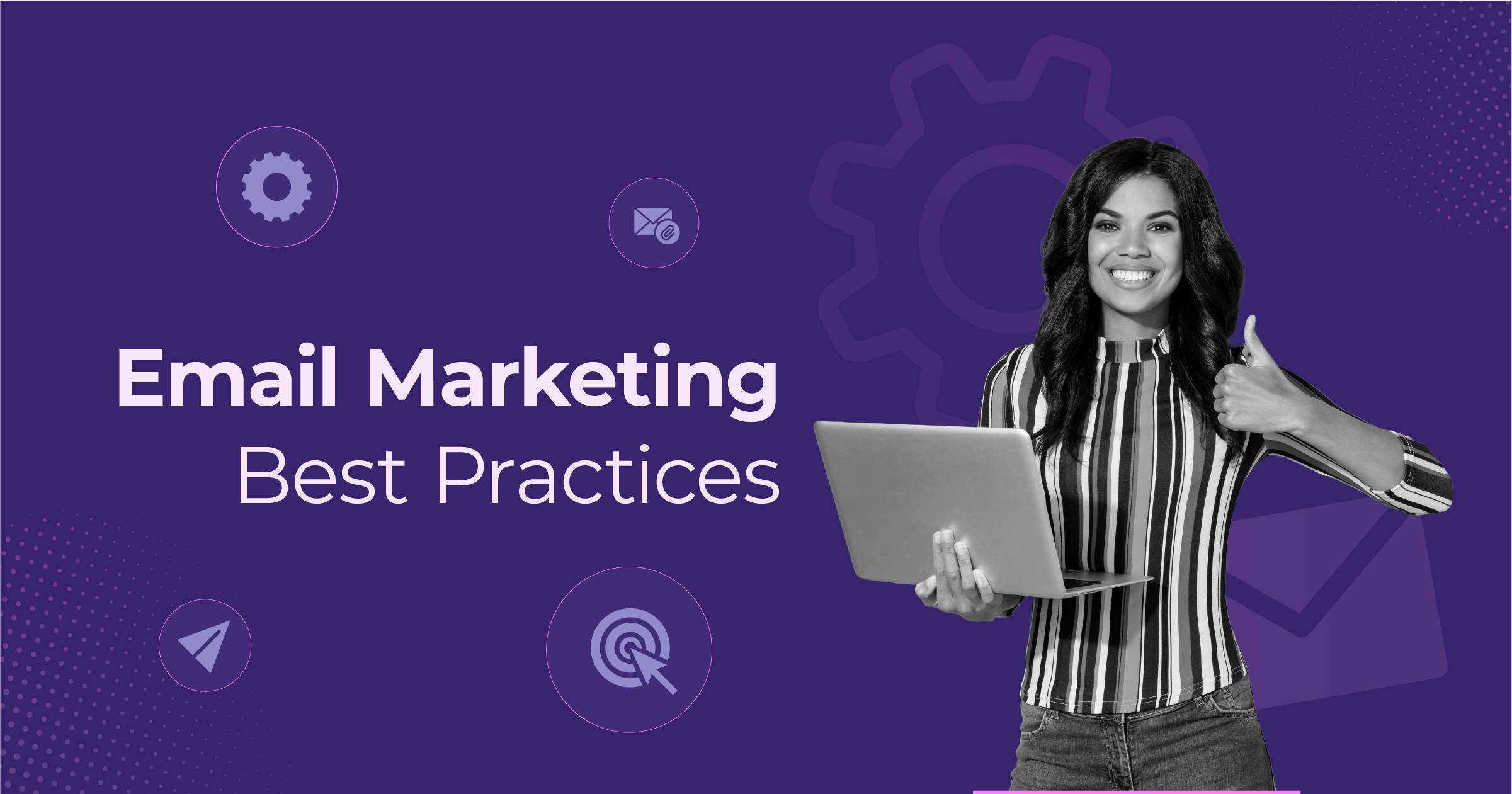
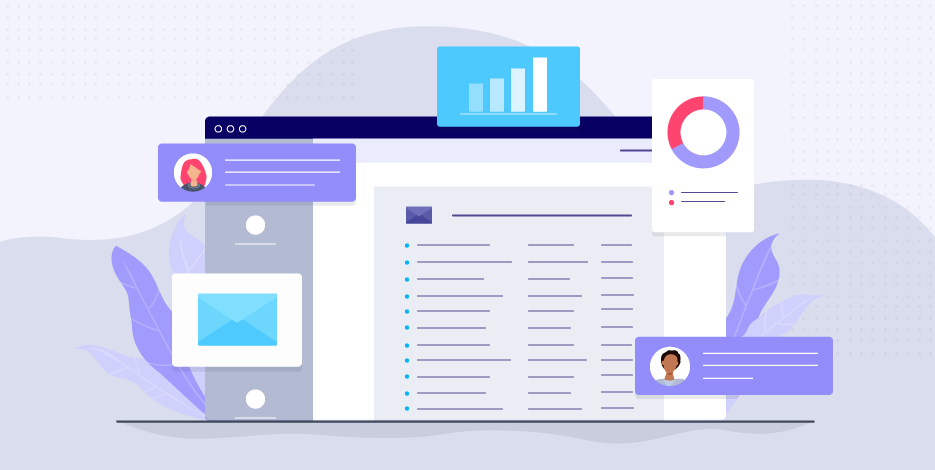
 Published by
Published by